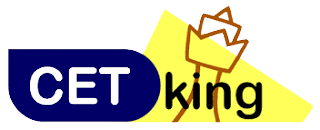“How Far I Am from JBIMS” by Cetking appears to be an analysis or a benchmark for students preparing for the Maharashtra MBA CET exam, specifically for those aspiring to secure admission to Jamnalal Bajaj Institute of Management Studies (JBIMS). The content primarily revolves around quantitative benchmarks, section-wise score distribution, and important topics across different sections of the exam.
This analysis will delve into the structure, key insights, and strategic takeaways from the document, focusing on how students can gauge their standing concerning JBIMS admission criteria.

1. Exam Structure & Benchmark Scores
The document emphasizes a total score of 150 points, with section-wise distribution as follows:
- Quantitative Aptitude (QA) – 35 marks
- Verbal Ability (VA) – 35 marks
- Logical Reasoning (LR) – 60 marks
- Abstract Reasoning (AR) – 20 marks
This suggests a dominance of Logical Reasoning (LR) in the exam, accounting for 40% of the total marks, followed by QA and VA at 23.3% each, and Abstract Reasoning at 13.3%.
To secure a seat at JBIMS, aspirants likely need a 99.99+ percentile, which translates to a score above 135-140 in CET.
Implication
- Logical Reasoning is crucial – Aspirants should focus on mastering puzzles, arrangements, and critical reasoning.
- A strong Quantitative base is essential, but speed and accuracy are more important than conceptual depth.
- Verbal and Abstract Reasoning together contribute nearly 37% – thus, balancing all four sections is key.
2. Key Topics & Weightage
The document lists various important topics across sections, which help in determining where aspirants should focus their preparation. Below is an analysis of these sections:
A. Quantitative Aptitude (QA) – 35 Marks
Topics covered:
- Basic Arithmetic: Percentage, Ratio-Proportion, Profit & Loss, Averages, Mixtures
- Numbers & Algebra: LCM-HCF, Surds, Indices, Equations, Functions, Logarithms
- Geometry & Mensuration: Area, Volume, Coordinate Geometry, Graphs
- Higher Mathematics: Progressions (AP-GP), Probability, PnC, Statistics, Trigonometry
- Speed-Based Topics: Approximation, BODMAS, Simplifications
Key Observations:
- The focus is on arithmetic-heavy problems rather than higher-level mathematics.
- Speed-based topics like approximation and simplification indicate that quick calculations are necessary.
- Data Interpretation (DI) is emphasized, which integrates arithmetic with logical skills.
Strategy for QA
- Prioritize Arithmetic (Profit & Loss, Percentages, Ratios, Mixtures) – these form the backbone of the section.
- Improve mental calculations to tackle DI and approximation problems quickly.
- Practice shortcut methods (Vedic math, number tricks) to improve speed.
- Ignore advanced math (Calculus, Matrices) as they are not part of CET.
B. Logical Reasoning (LR) – 60 Marks
Topics covered:
- Arrangements: Linear, Circular, Matrix-based puzzles
- Critical Thinking: Assumptions, Inference, Cause & Effect, Decision Making
- Logical Deduction: Syllogisms, Statement-based arguments
- Pattern Recognition: Coding-Decoding, Odd One Out, Series Completion
- Other Reasoning Areas: Blood Relations, Direction Sense, Input-Output, Clocks & Calendars
Key Observations:
- The highest-weightage section, which means aspirants need to master puzzles.
- Matrix, Linear, and Circular arrangements are dominant, emphasizing structured problem-solving.
- Statement-based reasoning and cause-effect questions test analytical thinking.
Strategy for LR
- Daily practice of puzzles (15-20 per day) to increase familiarity and speed.
- Time-based drills to simulate exam conditions (solving puzzles within 7-10 minutes).
- Focus on strong and weak arguments, assumptions, and cause-effect relations to strengthen decision-making skills.
- Use diagrams and tables for arrangement-based puzzles.
C. Verbal Ability (VA) – 35 Marks
Topics covered:
- Reading Comprehension: RC passages, Inference-based questions
- Grammar: Sentence correction, Subject-verb agreement, Tenses
- Vocabulary-based: Synonyms, Antonyms, One-word substitution, Fill-in-the-blanks
- Verbal Reasoning: Para Jumbles, Para Summary, Cloze Test
- Miscellaneous: Analogies, Spelling Mistakes
Key Observations:
- Reading comprehension (RC) is significant, implying a need for strong reading speed and comprehension.
- Vocabulary-heavy – aspirants should be well-versed in synonyms, antonyms, idioms, and word meanings.
- Grammar & Sentence Structure rules are tested, requiring conceptual clarity.
Strategy for VA
- Daily reading practice – newspapers, editorials (e.g., The Hindu, Economic Times).
- Build a word bank – focus on high-frequency words, idioms, and phrases.
- Grammar-focused study – revise rules for tenses, subject-verb agreement, and modifiers.
- Timed verbal drills – practice RCs under 8 minutes per passage.
D. Abstract Reasoning (AR) – 20 Marks
Topics covered:
- Visual Patterns: Mirror Images, Water Images, Embedded Figures
- Series & Classification: Completion of figures, Figure formation
- Logical Deductions: Cube & Dice, Paper Folding, Paper Cutting
Key Observations:
- The lowest weightage section, but important for overall percentile.
- Non-verbal reasoning tests spatial intelligence and pattern recognition.
- Speed is critical, as questions involve quick visual judgment.
Strategy for AR
- Solve visual puzzles regularly to develop pattern recognition.
- Use flashcards for mirror-image and embedded-figure recognition.
- Practice under strict time limits (30-40 seconds per question).
3. Exam Strategy & Key Takeaways
Based on the analysis of the document, here is a stepwise preparation plan:
- Strengthen LR First (60 marks)
- Solve at least 5-6 puzzles daily.
- Master statement-based reasoning (Assumption, Conclusion, Arguments).
- Build Arithmetic & DI Mastery (QA – 35 marks)
- Focus on percentages, ratios, profit-loss, and averages.
- Develop quick calculation skills using mental math tricks.
- Enhance Reading & Vocabulary (VA – 35 marks)
- Read newspapers daily for RC & grammar.
- Maintain a vocabulary journal for synonyms & antonyms.
- Improve Abstract Reasoning (AR – 20 marks)
- Solve mirror-image, paper-cutting, and embedded figures regularly.
- Work on speed and accuracy.
- Time Management & Mock Tests
- Solve full-length mocks (150 mins) twice a week.
- Focus on accuracy over speed initially, then optimize.

